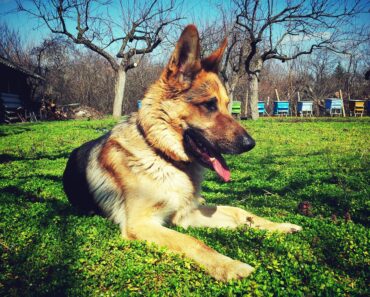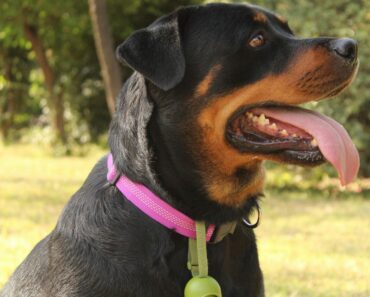The Siberian Husky is a breed renowned for its striking appearance, incredible endurance, and friendly disposition. Originating from the cold Siberian tundra, these dogs have captivated the hearts of many with their wolf-like features and lively spirit. This article delves into the history, characteristics, care needs, and suitability of the Siberian Husky as a family pet, along with three detailed tables to provide an overview of their essential traits, health concerns, and daily care requirements.

History and Origin
The Siberian Husky has its roots deep in the harsh, frigid climate of Siberia, where it was bred by the Chukchi people. These indigenous people relied on the breed for survival, utilizing the dogs to pull sleds across vast, icy landscapes. The Siberian Husky’s endurance, speed, and ability to work in extreme cold made them invaluable to the Chukchi, who depended on them for transportation and the delivery of goods.

In the early 20th century, these dogs caught the attention of American dog enthusiasts, especially after they were brought to Alaska for sled dog racing. The breed gained worldwide fame after the 1925 serum run to Nome, where a team of Siberian Huskies, led by the famous Balto, delivered diphtheria antitoxin across treacherous terrain to save a town from an outbreak. This event cemented the breed’s reputation as a resilient and reliable working dog.
Physical Characteristics
Siberian Huskies are medium-sized dogs with a compact and muscular build. They have a distinctive appearance, characterized by their almond-shaped eyes, which can be blue, brown, or heterochromatic (one eye of each color), and their thick double coat that comes in a variety of colors, including black, white, gray, red, and agouti.
Table 1: Physical Characteristics of Siberian Huskies
| Feature | Description |
|---|---|
| Height | Males: 21-23.5 inches, Females: 20-22 inches |
| Weight | Males: 45-60 pounds, Females: 35-50 pounds |
| Coat Type | Double coat, dense undercoat, and straight outer coat |
| Coat Colors | Black, white, gray, red, agouti, and combinations thereof |
| Eye Color | Blue, brown, heterochromatic (one blue, one brown) |
| Life Expectancy | 12-14 years |
Their wolf-like appearance is accentuated by their erect triangular ears and expressive facial markings, often described as “masks.” Despite their strong and sturdy appearance, Huskies are surprisingly agile and light on their feet, making them excellent runners.

Temperament and Personality
Siberian Huskies are known for their friendly and outgoing nature. They are typically good-natured dogs that get along well with both humans and other dogs. However, their strong prey drive may make them less compatible with smaller animals such as cats or rabbits.
These dogs are incredibly energetic and require ample exercise to stay happy and healthy. Without sufficient physical and mental stimulation, they can become bored, leading to destructive behaviors. Huskies are also known for their independence and strong will, which can make training a challenge. They respond best to positive reinforcement methods and consistency in training.
Table 2: Temperament and Personality Traits
| Trait | Description |
|---|---|
| Energy Level | High |
| Affectionate with Family | High |
| Good with Children | High |
| Good with Other Dogs | High |
| Prey Drive | High (may chase small animals) |
| Trainability | Moderate (requires patience and consistency) |
| Intelligence | High |
| Independence | High (can be stubborn or aloof) |
Huskies are also known for their vocal nature. They rarely bark but are more likely to “talk” or howl, expressing themselves in a wide range of sounds. This vocalization is often endearing to owners but can be surprising to those unfamiliar with the breed.
Care and Maintenance
Caring for a Siberian Husky requires a commitment to meeting their exercise needs, grooming their thick coat, and providing a balanced diet to maintain their health. Huskies shed significantly, especially during the change of seasons, a process known as “blowing coat.” Regular brushing is essential to manage shedding and keep their coat in good condition.
Exercise Requirements
Siberian Huskies are highly active dogs that need a significant amount of exercise daily. Ideally, they should have at least an hour of vigorous physical activity, such as running, hiking, or playing fetch. Mental stimulation is also important, as Huskies are intelligent dogs that enjoy challenges. Activities like agility training, puzzle toys, and obedience training can help keep their minds sharp.
Grooming Needs
Huskies have a thick double coat that requires regular maintenance. Brushing at least two to three times a week is recommended, and daily brushing is necessary during shedding seasons. Bathing should be done as needed, but not too frequently, as their coat is naturally resistant to dirt and odor.

Diet and Nutrition
Feeding a Siberian Husky requires attention to their unique dietary needs. These dogs have a high metabolism and need a diet rich in high-quality protein to support their energy levels. A well-balanced diet, whether commercial dog food or a raw diet, is essential for their health. It’s important to monitor their weight and adjust their food intake based on their activity level.
Table 3: Care and Maintenance of Siberian Huskies
| Care Aspect | Description |
|---|---|
| Exercise | 1-2 hours of daily exercise, including running and play |
| Grooming | Brushing 2-3 times per week, daily during shedding season |
| Bathing | As needed, typically every 3-4 months |
| Diet | High-quality protein-rich diet, adjusted for activity level |
| Health Monitoring | Regular vet check-ups, dental care, and weight monitoring |
| Mental Stimulation | Agility training, puzzle toys, and obedience training |
Health Concerns
Siberian Huskies are generally a healthy breed, but they are prone to certain health conditions that potential owners should be aware of. Regular vet check-ups, a balanced diet, and proper exercise can help manage and prevent many of these issues.
Some of the most common health concerns in Siberian Huskies include:
- Hip Dysplasia: This is a common condition in many medium to large dog breeds, where the hip joint does not fit together perfectly. This can lead to arthritis and mobility issues as the dog ages.
- Eye Conditions: Huskies are prone to several eye problems, including cataracts, progressive retinal atrophy (PRA), and corneal dystrophy. Regular eye exams by a veterinarian are important to catch and manage these conditions early.
- Hypothyroidism: This condition occurs when the thyroid gland does not produce enough hormones, leading to symptoms like weight gain, lethargy, and skin problems. It is typically managed with medication.
- Gastric Torsion (Bloat): Although not as common in Huskies as in other breeds, bloat can be a life-threatening condition that occurs when the stomach twists on itself. It’s important to feed your Husky smaller, more frequent meals and avoid vigorous exercise immediately after eating.
- Allergies: Huskies can be prone to allergies, which may manifest as skin irritations, ear infections, or gastrointestinal issues. Identifying and avoiding allergens, along with proper veterinary care, can help manage these allergies.

Suitability as a Family Pet
Siberian Huskies can make wonderful family pets for the right household. They are friendly, playful, and generally good with children. However, their high energy levels and need for exercise make them better suited for active families who can provide plenty of physical and mental stimulation.
Huskies are also known for their strong pack mentality, which means they typically enjoy the company of other dogs. However, their independent nature means they may not always be eager to please, which can be a challenge for first-time dog owners.
Prospective owners should also be aware of the breed’s tendency to escape. Huskies are notorious escape artists, thanks to their strong prey drive and curiosity. Secure fencing and supervision are crucial to prevent them from wandering off.
Training and Socialization
Training a Siberian Husky can be both rewarding and challenging. Their intelligence makes them quick learners, but their independent streak can also make them stubborn. Consistent, positive reinforcement techniques work best, and early socialization is crucial to ensure they grow up to be well-rounded dogs.
Basic obedience training should begin as soon as possible, focusing on commands like sit, stay, come, and heel. Given their history as working dogs, Huskies also excel in activities that challenge their minds and bodies, such as agility, obedience trials, and even sledding sports.
Socialization is equally important, especially with other animals and unfamiliar people. Exposure to a variety of environments, sounds, and experiences will help a Husky develop confidence and adaptability.
Siberian Husky in Modern Times

Today, Siberian Huskies are cherished as both working dogs and beloved family pets. They continue to participate in sledding competitions and other dog sports, showcasing their speed, endurance, and agility.
Beyond their athletic abilities, Huskies have also made a name for themselves in pop culture, often portrayed as loyal and adventurous companions.
Their striking looks and captivating personalities have made them popular across the world, but potential owners must be prepared for the commitment that comes with owning such an active and intelligent breed. With the right environment and care, a Siberian Husky can be a loyal and loving member of the family for many years.
Conclusion
The Siberian Husky is a remarkable breed, combining beauty, intelligence, and a spirited nature. Their history as sled dogs has endowed them with a strong work ethic and an independent spirit, traits that endear them to many. However, they are not the right fit for every household. Their high energy levels, grooming needs, and occasional stubbornness require an owner who is dedicated and knowledgeable.

With the right care, training, and environment, a Siberian Husky can bring immense joy and companionship to a family. Their loyalty, playful nature, and love for adventure make them not just pets but true family members.
This article provided an in-depth look at the Siberian Husky, offering insights into their history, characteristics, and care needs. The tables included offer a quick reference guide to their physical traits, temperament, and care requirements, helping prospective owners make informed decisions about this unique and captivating breed.





